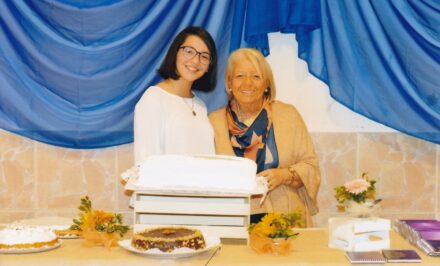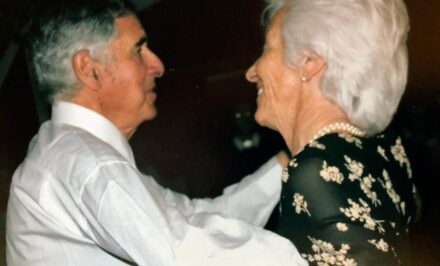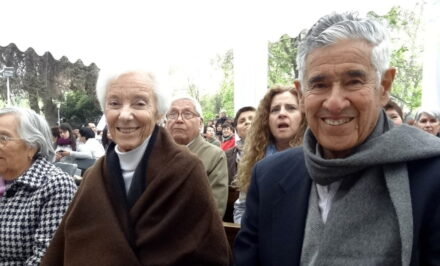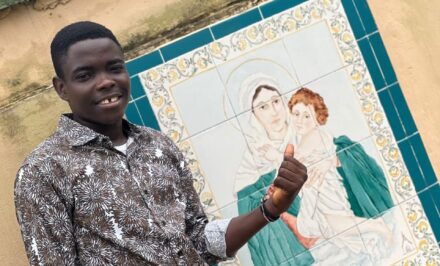 org. On 29 September, the Feast of the Holy Archangels Michael, Gabriel and Raphael, Auxiliary Bishop Heiner Koch celebrated the Requiem for Monsignor Felix Kreutzwald in the Parish Church of St Magdalene in Bonn, Endenich. Monsignor Kreutzwald is inseparably connected with both the parish and the Kreuzberg Church with its Schoenstatt shrine. He had been called to his eternal home on 19 September at the age of 79 after a brief, but serious illness. He was a member of the Institute of Schoenstatt Diocesan Priests and had made a major contribution to the international spread of his community. For a number of years he was the Diocesan President of the Cologne Schoenstatt Family, the Spiritual Assistant to the Schoenstatt Women’s Federation, and since the 1970s together with Bishop Heinrich Tenhumberg the driving force behind the dream of building a shrine on the Kreuzberg, Bonn.
org. On 29 September, the Feast of the Holy Archangels Michael, Gabriel and Raphael, Auxiliary Bishop Heiner Koch celebrated the Requiem for Monsignor Felix Kreutzwald in the Parish Church of St Magdalene in Bonn, Endenich. Monsignor Kreutzwald is inseparably connected with both the parish and the Kreuzberg Church with its Schoenstatt shrine. He had been called to his eternal home on 19 September at the age of 79 after a brief, but serious illness. He was a member of the Institute of Schoenstatt Diocesan Priests and had made a major contribution to the international spread of his community. For a number of years he was the Diocesan President of the Cologne Schoenstatt Family, the Spiritual Assistant to the Schoenstatt Women’s Federation, and since the 1970s together with Bishop Heinrich Tenhumberg the driving force behind the dream of building a shrine on the Kreuzberg, Bonn.
 “The diagnosis that he had an incurable tumour came like a bolt from the blue and he was suddenly confronted with the fact that death was just around the corner. In prayer and discussion he confronted his situation and struggled to accept it. With great inner freedom he gave up the idea of treatment with radiotherapy and chemotherapy, because the doctor said it could only slow the development of the tumour, but not remove it.” These were the words of Monsignor Peter Wolf, the Rector General of the Institute of Schoenstatt Diocesan Priests at the memorial service in the Kreuzberg church on Friday evening.
“The diagnosis that he had an incurable tumour came like a bolt from the blue and he was suddenly confronted with the fact that death was just around the corner. In prayer and discussion he confronted his situation and struggled to accept it. With great inner freedom he gave up the idea of treatment with radiotherapy and chemotherapy, because the doctor said it could only slow the development of the tumour, but not remove it.” These were the words of Monsignor Peter Wolf, the Rector General of the Institute of Schoenstatt Diocesan Priests at the memorial service in the Kreuzberg church on Friday evening.
Moriah and Tabor – “Throughout my life I have wanted both”
“The fact that he received the diagnosis during a conference of his community on Mount Moriah around the time of the Feast of the Transfiguration, helped him to interpret and accept God’s will. He expressed these thoughts on the following day as I brought him Communion. I had given him Communion and we held our thanksgiving in silence until he suddenly began to pray out loud. In this prayer he said: I am walking the path from Mount Moriah to Mount Tabor.”
“These words shed a bright light on the personality of this priest,” Dr Wolf continued. “The name ‘Mount Moriah’, which was given to our house in relation to Abraham’s sacrifice, had become for him the embodiment of self-surrender to God’s incomprehensible will. For him Mount Tabor, which is connected with the transfiguration and glorification of our Lord, stood for the promise of heavenly glory. He added: I have wanted both throughout my life, I have proclaimed both again and again as a priest. Now I want to and must walk this path from Mount Moriah to Mount Tabor.
“Fr Kreuzwald repeated these words a day later in a small group when we said goodbye during the Eucharist celebrated on the altar from Dachau concentration camp in our house on Mount Moriah. It was his wish that as Rector General of his community I should administer the anointing of the sick during this Holy Mass. We were all deeply moved by his witness and the interpretation he had found for his future path: I will walk the path from Mount Moriah to Mount Tabor. It became a path with many precious encounters. … For many years he had given his all so that our community of priests should grow internationally. I was able to tell him on his sick bed about the ordination of one of his confreres as a Caribbean Bishop, and to show him some photos.”
The legendary Jericho marches and the “political” shrine
 Memories of witnesses from the time when Msgr. Felix Kreutzwald was a young priest in the parish of St Servatius in Siegburg and Bonn showed further facets of his rich personality.
Memories of witnesses from the time when Msgr. Felix Kreutzwald was a young priest in the parish of St Servatius in Siegburg and Bonn showed further facets of his rich personality.
“Felix the happy, big cross, small forest!” (His name translates as cross-forest.) As he said this he pointed to his back and his full head of hair. This is how children and young people of that time remember the likeable “Fr Kreutzwald”, who spontaneously organised cars, drivers and passengers to take people to the induction of his friend, Heinrich Tenhumberg, as Bishop of Munster. By the end of the journey the children knew all the popular Schoenstatt and other songs, and also that over the final stretch of the Autobahn this priest liked to overtake cars with MPHC stickers that were filled with Schoenstatt VIPs.
The legendary “Jericho marches” will never be forgotten. These took place on Sunday afternoons around the grounds on the Kreuzberg where, according to Bishop Tenhumberg and Fr Kreuzwald’s vision, a shrine was to be built. Surprised people out for a stroll saw them saying the Rosary as they walked around the fenced area until the “walls of Jericho” fell and the purchase had gone through.
After what felt like an eternity spent between looking bashfully at the ground and thrilling adventures, the walls of Jericho fell and a shrine could be built in what was then the capital of Germany – a shrine for the political and social re-formation of the world, a shrine for forming a world through the spirit of the covenant of love that touched diplomats and leaders. A mission that is perhaps too big and perhaps daring for little Bonn.
But a mission that is perhaps not too big or too daring for Schoenstatt on the way to its jubilee in 2014, during which precisely this great mission will be condensed into a single concept that becomes a message: Covenant Culture. Even if it will take a few Jericho marches, and a few paths from Moriah to Tabor, before it becomes a reality within Schoenstatt and beyond.
Translation: Mary Cole, Manchester, England













